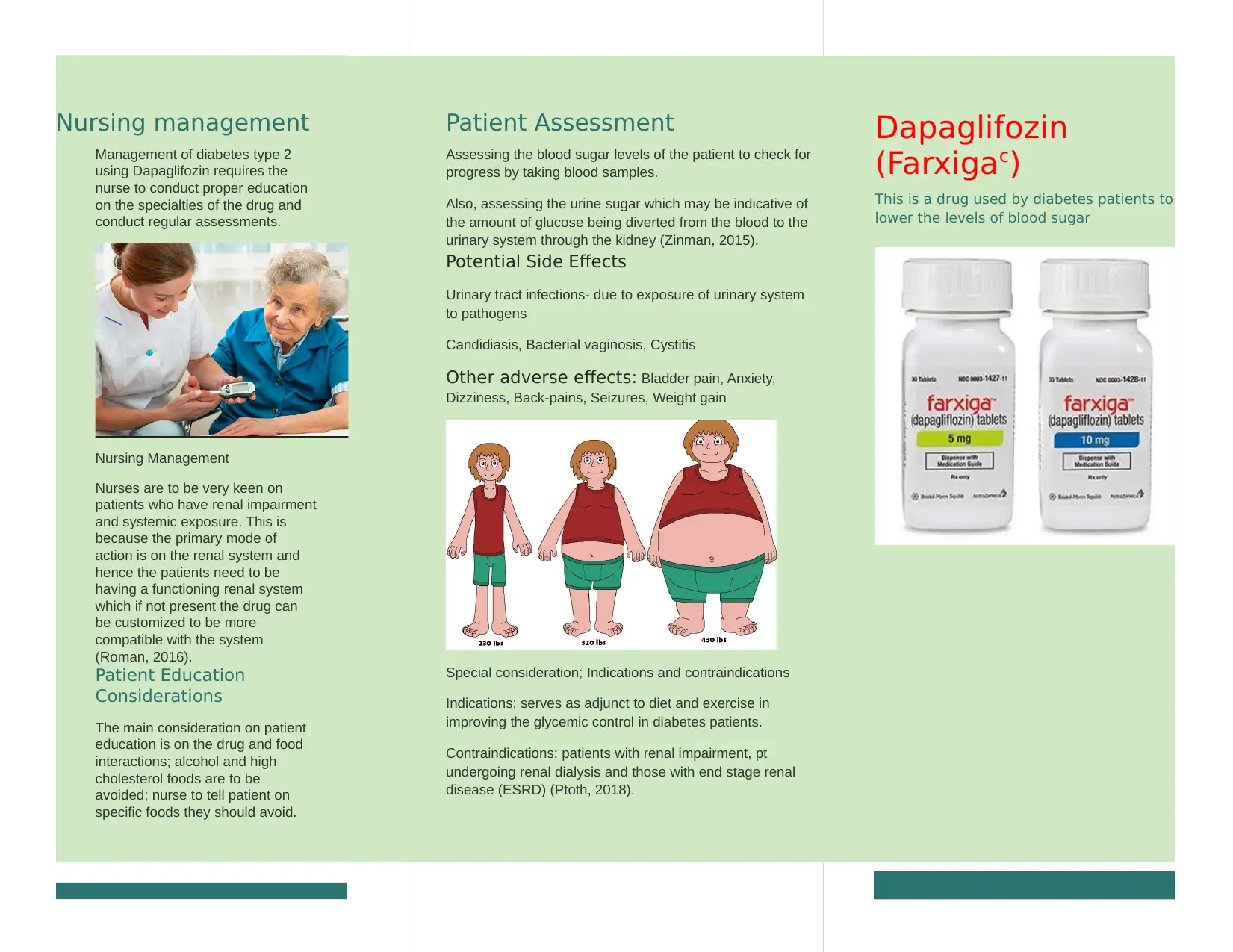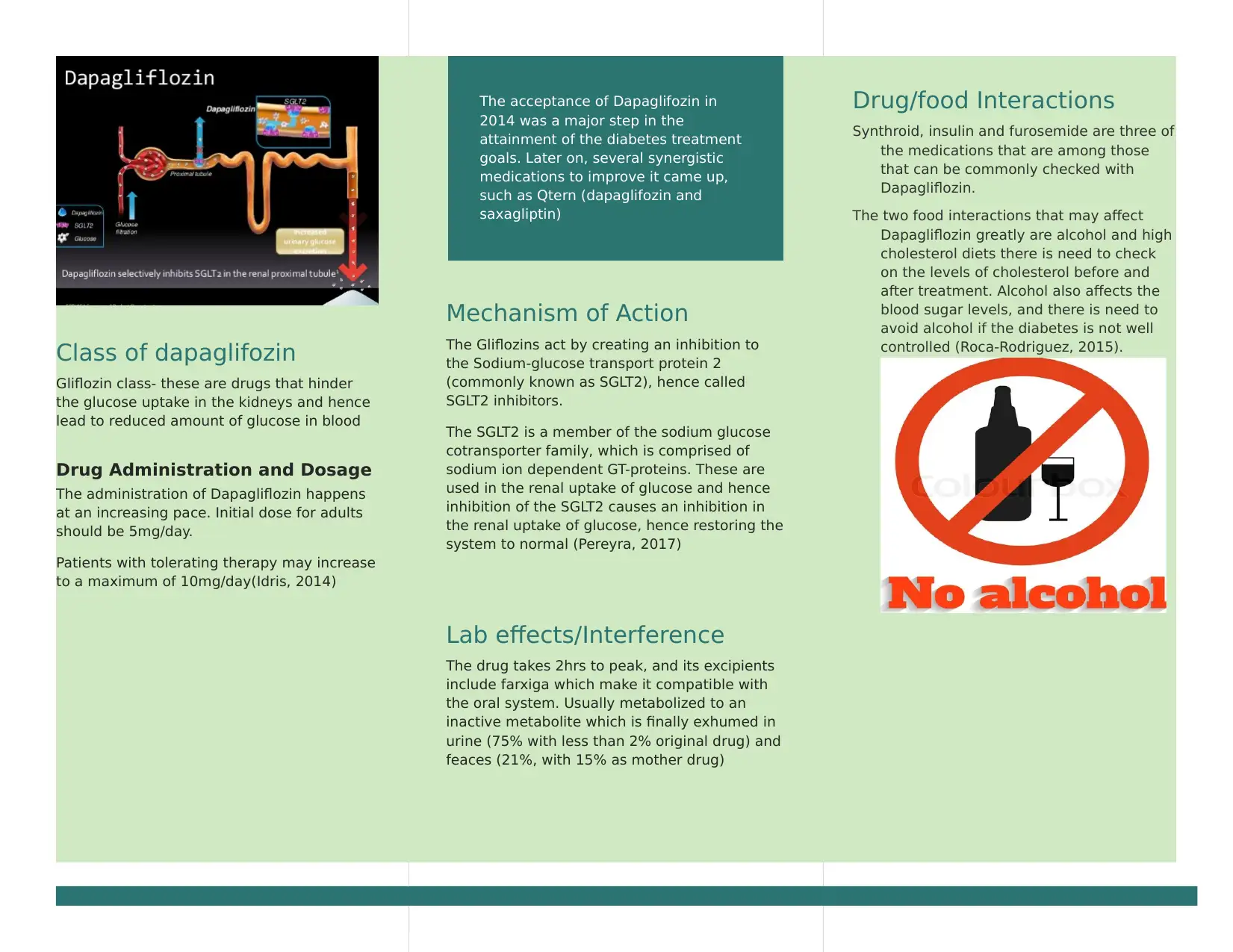Diabetes Treatment: Nursing Management with Dapagliflozin
VerifiedAdded on 2021/05/27
|2
|618
|99
Report
AI Summary
This report provides a comprehensive overview of Dapagliflozin, a medication used in the management of type 2 diabetes. It details the drug's mechanism of action, focusing on its role as an SGLT2 inhibitor, and its impact on renal glucose uptake. The report explores the nursing management aspects, including patient education regarding drug interactions with medications like Synthroid, insulin, and furosemide, as well as food interactions such as alcohol and high cholesterol diets. It also covers patient assessment through blood sugar and urine sugar monitoring, potential side effects like urinary tract infections and candidiasis, and contraindications such as renal impairment and end-stage renal disease. The report emphasizes the importance of understanding the drug's administration, dosage, and the need for careful monitoring of patients, especially those with pre-existing renal conditions. This report serves as a valuable resource for nurses and healthcare professionals involved in diabetes care, providing insights into the effective and safe use of Dapagliflozin.
1 out of 2








![[object Object]](/_next/static/media/star-bottom.7253800d.svg)